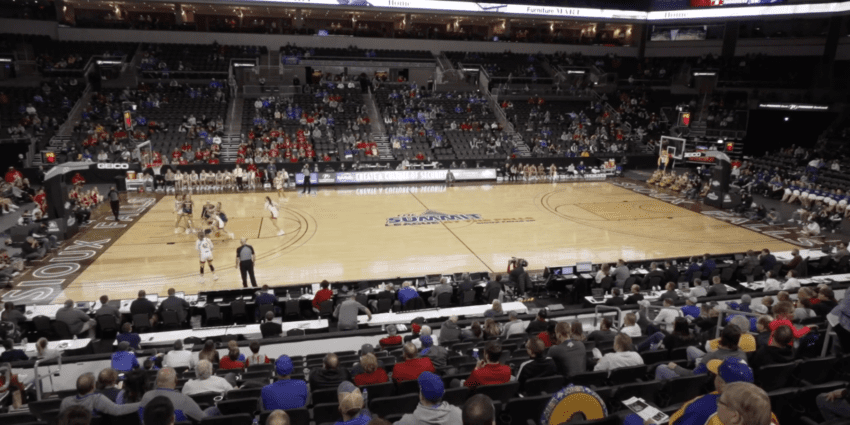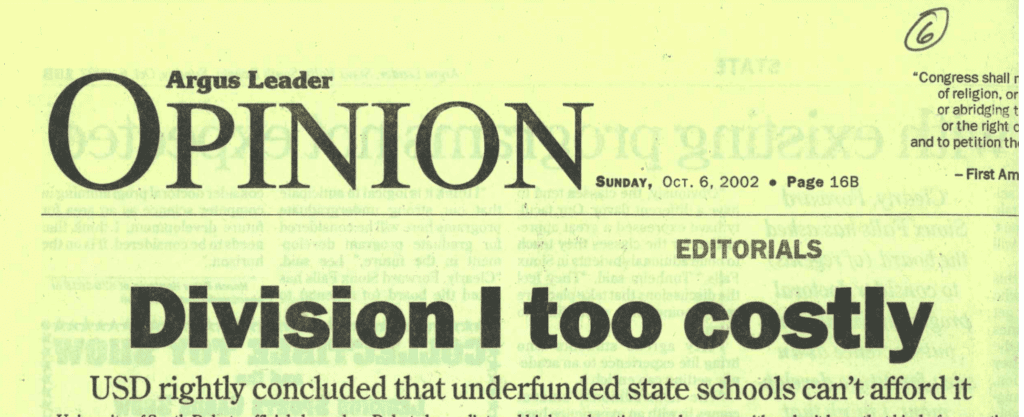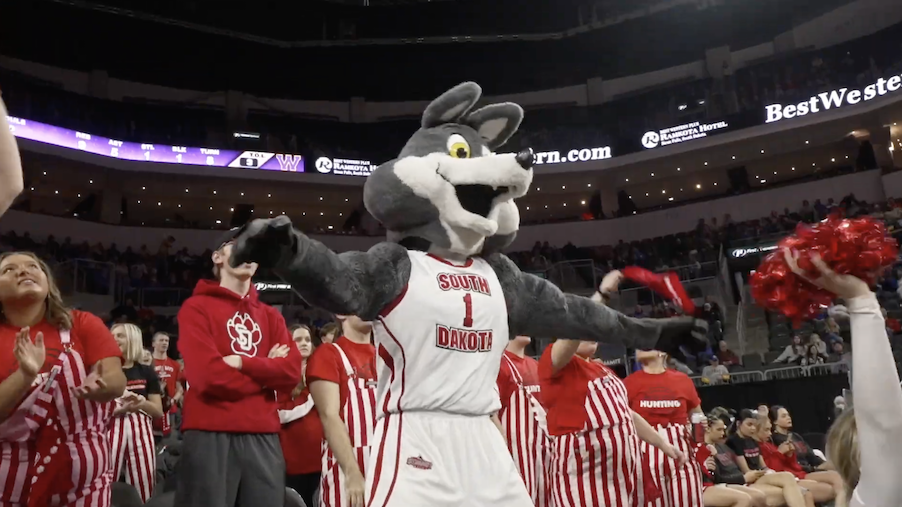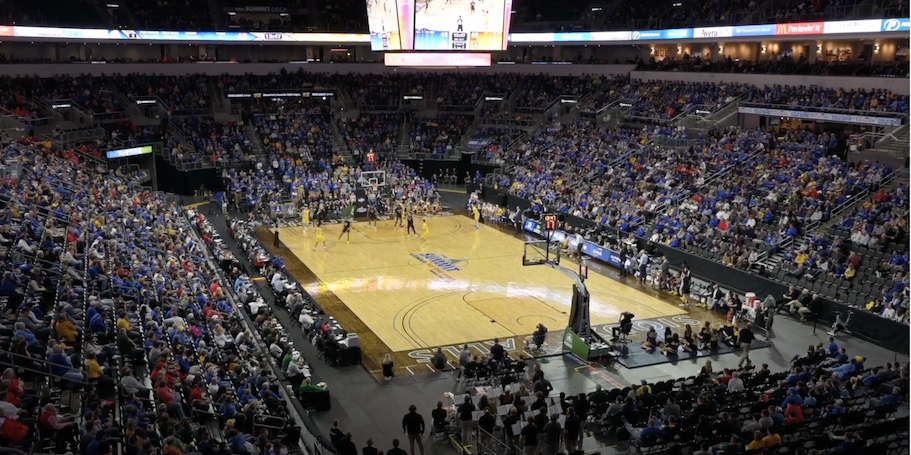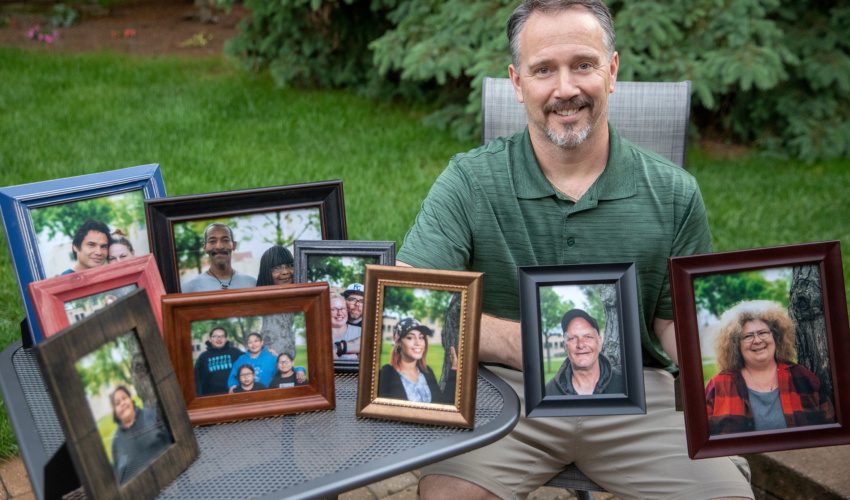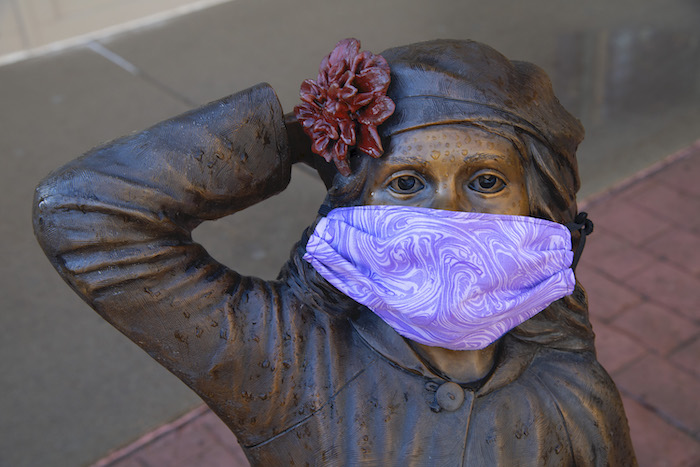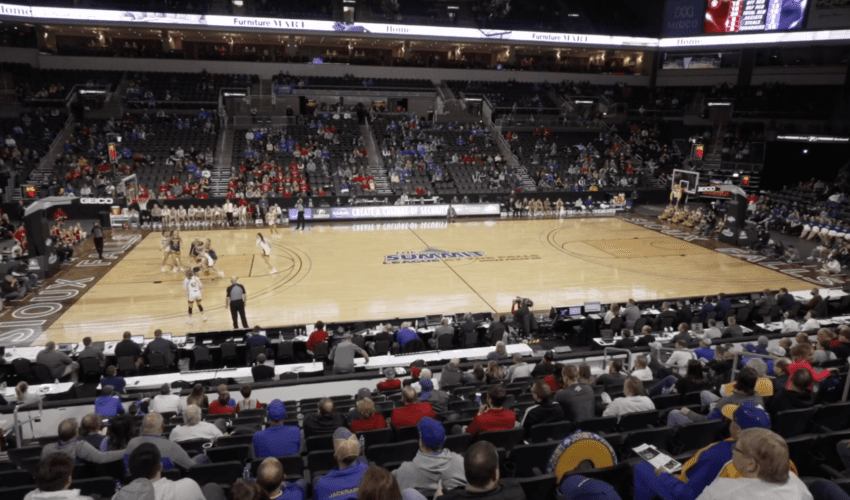Jodi’s Journal: Lessons and looking back — what going Division I means 20 years later
April 10, 2022
To be honest, up until the past month I couldn’t tell you the last time I caught more than a few minutes of a women’s basketball game.
But there was no budging from the screen a few weeks ago as I watched the USD women come within a basket of their first trip to the NCAA Division I Elite Eight.
They’d already soundly beaten a powerhouse Baylor team and were closing in on Michigan, and maybe it’s because I happened to be watching from another state, but seeing South Dakota on a national stage like that struck me as an even bigger deal.
Then, the following week, SDSU’s women’s team delivered a dominating win at home to take the WNIT championship, another proud moment for a school and a state.
It’s fitting these two marquee tournament runs happened as we mark the 20th anniversary of South Dakota’s first university to enter NCAA Division I play – a move that drew many doubters.
“I can usually tell you how a vote will go ahead of time, but this time I don’t have a guess,” then-president of the Board of Regents Harvey Jewett told the Argus Leader in 2002 as SDSU moved forward with a proposal to transition to Division I.
The board took hours of testimony as it considered approval, and while proponents reportedly outnumbered opponents 2 to 1, there were passionate pleas against the move.
“I love this school, and I hate to see it go down the drain,” said Jim Marking, SDSU basketball coach from 1965 to 1974.
He had plenty of company, including the editorial board of the Argus Leader, which came out with the headline: “Division I too costly” and praised USD for choosing not to consider a Division I move.
To justify such a shift for SDSU, the editorial continued, would require closing at least three state universities and subsequently increasing state funding or developing “a large corps of wealthy and generous alumni,” it said. “None of this will happen, making the move to Division I a huge risk. And without money, that will leave SDSU with – at best – a second-rate athletic program. It simply won’t be able to compete with other Division I schools that have more resources.”
Money was the big sticking point – what it would cost to be competitive athletically and academically was thought to be a barrier that couldn’t be overcome. But legacy was part of it too, a fear of losing traditional rivalries and the prospect of perennial losing records.
On the other side, SDSU president Peggy Miller and athletic director Fred Oien brought a funding plan. Then-chairman of the SDSU Foundation Dana Dykhouse said an alumnus already had committed to raising $7 million and that with national exposure, sponsorships would increase.
Daktronics president Al Kurtenbach made what I thought was a telling argument:
“I think we need to encourage young people,” he said. “We South Dakotans are seriously afflicted with low self-esteem. … I think it serves as a handy excuse not to do anything.”
But in this case, we did. Barely. It was a 5-4 vote on the Board of Regents.
Dykhouse remembers how this whole conversation started.
“It took a few visionaries like Fred Oien and Peggy Miller to drag South Dakota kicking and screaming to this, and I give a lot of credit to then-Gov. Mike Rounds who was a big behind-the-scenes worker. It would have been a 90-10 vote against if we would have had to take a (public) vote then.”
His own epiphany, as he put it, came at a fundraising event in Sioux Falls in 2002.
“As we looked around the room, almost everyone had graduated from USD, SDSU or Augustana,” he said. “What was fascinating was that in that same group, all their kids were going to Minnesota, Iowa, Iowa State, Nebraska.”
Why is that, he asked.
“Well, it was not cool to go to USD or SDSU at the time,” Dykhouse said. “They were looking for bigger and better things, and we have hopefully changed that to some degree.”
But it took time. In 2005, Jeremy Hoeck, then a sophomore at USD, wrote in a letter to the editor that it was “an ill-fated” move that “sold out the conference and disgraced the state.”
I looked him up recently and found him in Yankton, where he now works at the library after spending the past several years as a sports reporter at the Yankton Press & Dakotan. It has given him a front-row seat to Division I athletics in South Dakota, and he was good-natured in looking back on the doubts his college self had cast.
“I do remember at the time thinking, and I don’t think I was alone, but a lot of us had thought that it seemed like such a different world,” Hoeck said. “Are they even going to be competitive? I remember thinking that’s a big change, from what you’re giving up to what you think you could get to.”
He’s now a dedicated fan, loves that classic rivalries have returned and appreciates how South Dakota and its universities have been able to marshal the resources to make it all happen.
“As a spectator, it’s been really neat to follow, to see the fans around here really got behind the move and have allowed facilities to be built,” Hoeck said. “And in the span of two weeks, to see the women get to the Sweet 16 and to see SDSU women host a championship game in Brookings, it was such a great time to be a fan of basketball.”
It certainly appeared that way to me, as I stopped by The Summit League basketball tournament last month and saw thousands of South Dakota fans showing their school colors, including plenty of students.
I was able to interview several of them when they came to an event organized by the Sioux Falls Development Foundation to connect them with career opportunities in our area.
To a student, freshmen through seniors, there were ear-to-ear grins and nothing but good things to say about the tournament experience and their impressions of Sioux Falls.
And these weren’t all South Dakota natives, either. Most of the students I talked with had come here from other states for college: Minnesota, Iowa, Wisconsin and even Texas.
Something SDSU president Barry Dunn said on the sidelines that day has stuck with me:
“We’re a Division I university. Sioux Falls is a Division I community, and we have to act like it,” Dunn said to me. “We have to turn it up a notch. I think you guys are certainly doing that, and we appreciate it a great deal.”
If there were a community equivalent to Division I, I agree Sioux Falls has achieved it. And just like that transition, this community has had to overcome its own share of “what-ifs.”
Whether it was investing in the Lewis & Clark water system, building Phillips Avenue to Falls Park, borrowing money for major quality of life projects, granting tax increment financing for significant downtown investments past and present, the list could go on and will go on.
What if downtown didn’t continue to develop? What if people didn’t move here as projected? What if the crowds didn’t come to the events? What if we didn’t bring in enough revenue for the payments to make sense? There were always plenty of reasons to say no. I know I’ve been guilty of sometimes focusing too much on the obstacles and less on the opportunities too. We all probably are at times.
But the collegiate move to Division I serves as a reminder that when you make big, but smart, bets and put in the work behind them, they often pay off.
“Don’t be afraid of stepping out,” Dykhouse agreed.
When you step out, often people step up.
In this case, “Who really stepped up? It was the young people of South Dakota,” Dykhouse continued. “They stepped up and took on the challenges … both athletically and academically … and on a national stage have made all South Dakotans proud.”
I can see the same thing happening again, 20 years later, as Augustana University pursues its own Division I move. Change is hard, doubts are guaranteed, but – as Dunn put it – this is a Division I community and thinking bigger has to become engrained in us if we’re to realize the potential that exists here for people of all ages.
“If I’m a fifth or sixth grader in Sioux Falls and I see girls from Sully Buttes and Sioux Falls beating Baylor and Ole Miss and Minnesota and so forth, what’s my perception going to be about what I can achieve in South Dakota?” Dykhouse said.
“It’s a whole different perception. Division I had nothing to do with athletics. It was totally about changing the attitude of South Dakota so our young people believe they can compete on that stage. In business, they have to compete on that stage. They have to compete on a national, world stage from South Dakota because so much of our economy is based on that. And we can compete anywhere. It was all about an attitudinal change, a perception change for South Dakota, and it’s really come true now.”

